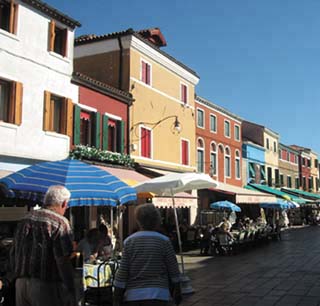Problem : Solution Restore color to underexposed areas
Problem : Solution Restore color to underexposed areasProblem: Photograph is underexposed causing loss of detail.
Solution: Use the History Brush tool to restore detail and clarity.
Select the shadow areasThis technique works best when only a portion of a photo is underexposed, as shown in our Problem image. To begin:
Once you've applied the Color Dodge fill, the shadow areas of your image should be considerably brighter. In fact, they may look too bright, but that's okay because we'll blend them with the original image later on. Take a snapshot
Note You'll lose all of your snapshots and history states if you close and re-open the file, so be sure to do all of the retouching work we describe in a single Photoshop session. Paint in the detailsNow we're ready to enhance the original image.
Color when and where you need itWhile you can produce a similar color enhancement using the Shadow/Highlight tool (introduced in Photoshop CS), the technique we describe in this article allows you to apply the enhancement selectively and gives you more control over the results. It also functions in older versions of Photoshop and in color modes, such as CMYK, where some adjustment tools don't work. |
EAN: N/A
Pages: 105
- Chapter VIII Personalization Systems and Their Deployment as Web Site Interface Design Decisions
- Chapter XI User Satisfaction with Web Portals: An Empirical Study
- Chapter XII Web Design and E-Commerce
- Chapter XIII Shopping Agent Web Sites: A Comparative Shopping Environment
- Chapter XIV Product Catalog and Shopping Cart Effective Design


 Color Range to use the Color Range tool.
Color Range to use the Color Range tool.